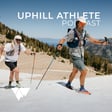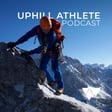
Chronicles of K2 with Jon Lawrie and Martin Zhor: Part 2
In the second episode of Chronicles of K2, Steve, Martin and Jon discuss Jon’s specific training for the mountain and his background before coming to work with Uphill Athlete. The three breakdown Jon’s progression from unstructured gym work to establishing an elite endurance base. They also work through an injury Jon sustained prior to his K2 training block and how he mentally dealt with the training progression from injury. Martin discusses his approach to acclimatization with Jon and how Jon managed to accomplish the climb without supplemental oxygen. This episode reveals the hard work and progression of a climber from beginner to elite athlete.
If you'd like to check out our new memberships or learn more about Uphill Athlete, please visit uphillathlete.com or write to us at coach@uphillathlete.com



















